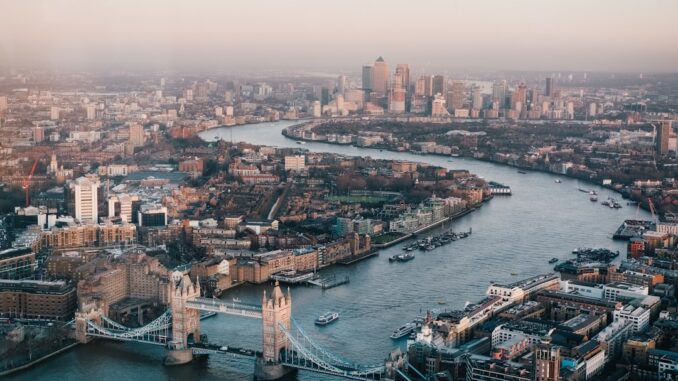
Embarking on a building project in London can be both exciting and daunting. With its unique blend of historical charm and modern innovation, the city offers a backdrop like no other. However, navigating London’s building planning process requires careful attention to detail and a clear understanding of the steps involved.
1. Initial Preparation: Laying the Groundwork
Before you even think about picking up a hammer, it’s crucial to lay a solid foundation for your project.
Assess Your Needs and Set Clear Objectives
Start by defining what you want to achieve. Are you looking to expand your living space, renovate an existing structure, or build something entirely new? Having a clear vision will guide every subsequent decision.
Understand the Local Planning Regulations
Each of London’s 32 boroughs has its own set of planning guidelines. Familiarize yourself with the specific regulations of the area where your project is located. This knowledge will help you avoid potential pitfalls and ensure compliance. (smastudiobarnet.com)
Successful low-energy building design hinges on careful planning. Focus360 Energy can help.
2. Engaging Professionals: Building Your Dream Team
A successful project often hinges on the expertise of the professionals you choose to work with.
Hire an Experienced Architect
An architect with a deep understanding of London’s building codes and aesthetic preferences can bring your vision to life. They can also assist in obtaining necessary planning permissions. (nancygouldstone.com)
Consult a Reputable Construction Company
Partnering with a seasoned construction firm ensures that your project is executed efficiently and to a high standard. Their experience can be invaluable in navigating the complexities of London’s construction landscape. (bradleybuildingservices.com)
3. Navigating Planning Permissions: Securing Approval
Understanding when and how to obtain planning permission is crucial.
Determine the Need for Planning Permission
Not all projects require full planning permission. Some minor alterations fall under Permitted Development Rights. However, if your project involves significant changes, such as extensions or alterations to a listed building, you’ll need to apply for planning permission. (homebuilding.co.uk)
Engage in Pre-Application Consultation
Many boroughs offer pre-application advice services. Engaging with them early can provide valuable feedback and streamline the formal application process. (smastudiobarnet.com)
4. Design and Documentation: Bringing Your Vision to Life
With approvals in hand, it’s time to focus on the design and documentation.
Develop Detailed Plans
Work closely with your architect to create comprehensive plans that detail every aspect of your project. These plans will be essential for obtaining permits and guiding the construction process. (nancygouldstone.com)
Prepare Necessary Documentation
Ensure all required documents, such as design and access statements, are prepared. This documentation will support your planning application and demonstrate compliance with regulations. (architectsab.com)
5. Budgeting and Financing: Managing Costs
Financial planning is a cornerstone of any successful project.
Create a Detailed Budget
Account for all potential costs, including materials, labor, permits, and contingencies. A well-structured budget helps prevent unexpected expenses and keeps the project on track. (procore.com)
Secure Financing
Explore financing options, whether through personal savings, loans, or investors. Having your finances in order ensures that you can proceed without unnecessary delays.
6. Construction Phase: Turning Plans into Reality
With everything in place, it’s time to build.
Select a Reliable Contractor
Choose a contractor with a proven track record in London. Their expertise will be crucial in navigating the unique challenges of the city’s construction environment. (nancygouldstone.com)
Monitor Progress
Regular site visits and meetings with your project team will help ensure that the project stays on schedule and meets quality standards. (nancygouldstone.com)
7. Completion and Handover: Finalizing the Project
As your project nears completion, focus on the final details.
Conduct a Thorough Inspection
Before accepting the work, ensure that all aspects meet your expectations and comply with regulations. Address any issues promptly to avoid future complications. (nancygouldstone.com)
Obtain Necessary Certifications
Ensure that all required certifications, such as building control approvals, are obtained. These documents are essential for the legal occupancy of the building. (nancygouldstone.com)
Embarking on a building project in London is a significant undertaking, but with careful planning and the right team, you can navigate the process successfully. Remember, each project is unique, and staying informed and adaptable will serve you well throughout your journey.
References


Given the unique regulations across London’s 32 boroughs, how often do you find that pre-application consultations significantly alter project plans, and what are the most common points of contention raised by planning departments?
That’s a great question! Pre-application consultations are invaluable. I’d estimate they lead to significant plan alterations in at least 60% of cases. Common sticking points often revolve around height restrictions impacting neighbourhood views and disagreements on the materials palette not being in keeping with the area’s character. These consultations help avoid costly revisions later!
Editor: FocusNews.Uk
Thank you to our Sponsor Focus 360 Energy
The emphasis on understanding local borough regulations is key. Beyond the written guidelines, engaging with local community groups early can provide invaluable insights into neighbourhood preferences and potential concerns, fostering smoother project integration.
Thanks for highlighting the importance of community engagement! It’s so true that understanding neighbourhood preferences is crucial. Building relationships with local groups really helps ensure a project aligns with the area’s character, often leading to a smoother, more welcomed development. Has anyone had a particularly positive experience with this?
Editor: FocusNews.Uk
Thank you to our Sponsor Focus 360 Energy
The point about assessing needs and setting clear objectives is vital. Clear goals at the outset streamline the entire process, but how often do you find these objectives shift during the design or pre-construction phases due to unforeseen site conditions or updated regulations?